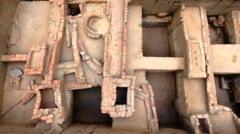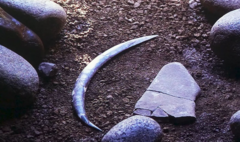Archaeologists and historians from the Vienna Museum announced this exciting find, which dates from A.D. 80 to 234, a time marked by numerous Roman emperors such as Domitian and Trajan. The grave's skeletal remains, characterized by battle injuries, suggest a rapid abandonment following a military defeat. Radiocarbon dating and the discovery of Roman artifacts, including weaponry and distinctive military shoe nails, further corroborate the date and context of the burial.
Michaela Binder, the lead anthropologist, expressed the rarity of such unburnt remains in Central Europe, noting the limited practices of burial during the first century A.D. “It is an absolute unique chance to study the life histories of people in the first century A.D.,” she stated, underscoring the historical importance of the find. The ongoing analysis promises to reveal insights into the complex interactions between the Roman Empire and the Germanic tribes during this tumultuous period.
Michaela Binder, the lead anthropologist, expressed the rarity of such unburnt remains in Central Europe, noting the limited practices of burial during the first century A.D. “It is an absolute unique chance to study the life histories of people in the first century A.D.,” she stated, underscoring the historical importance of the find. The ongoing analysis promises to reveal insights into the complex interactions between the Roman Empire and the Germanic tribes during this tumultuous period.



















